Central-Finnish Aviation Museum - Tikkakoksi / Finnland
Update: 2019/10/30 by Robert Kysela / CHK6
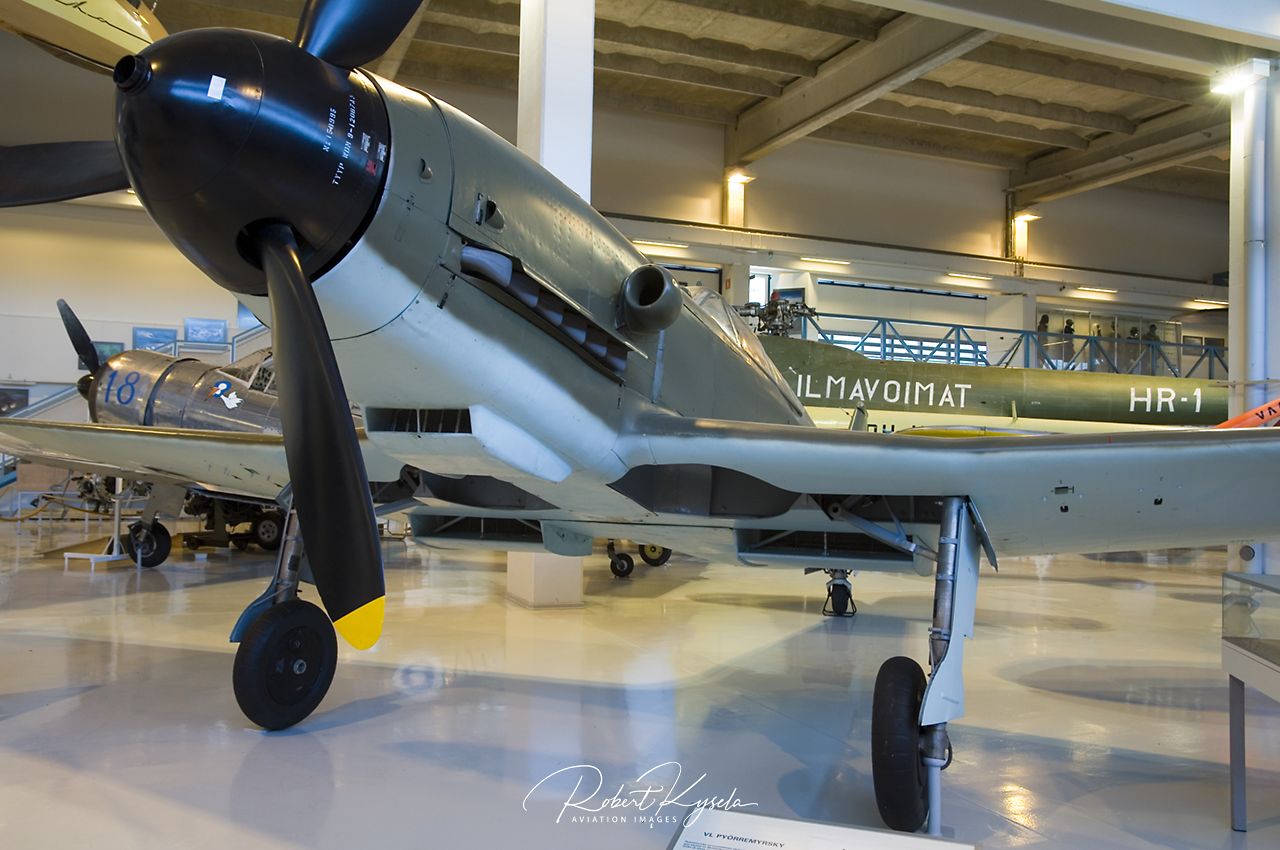
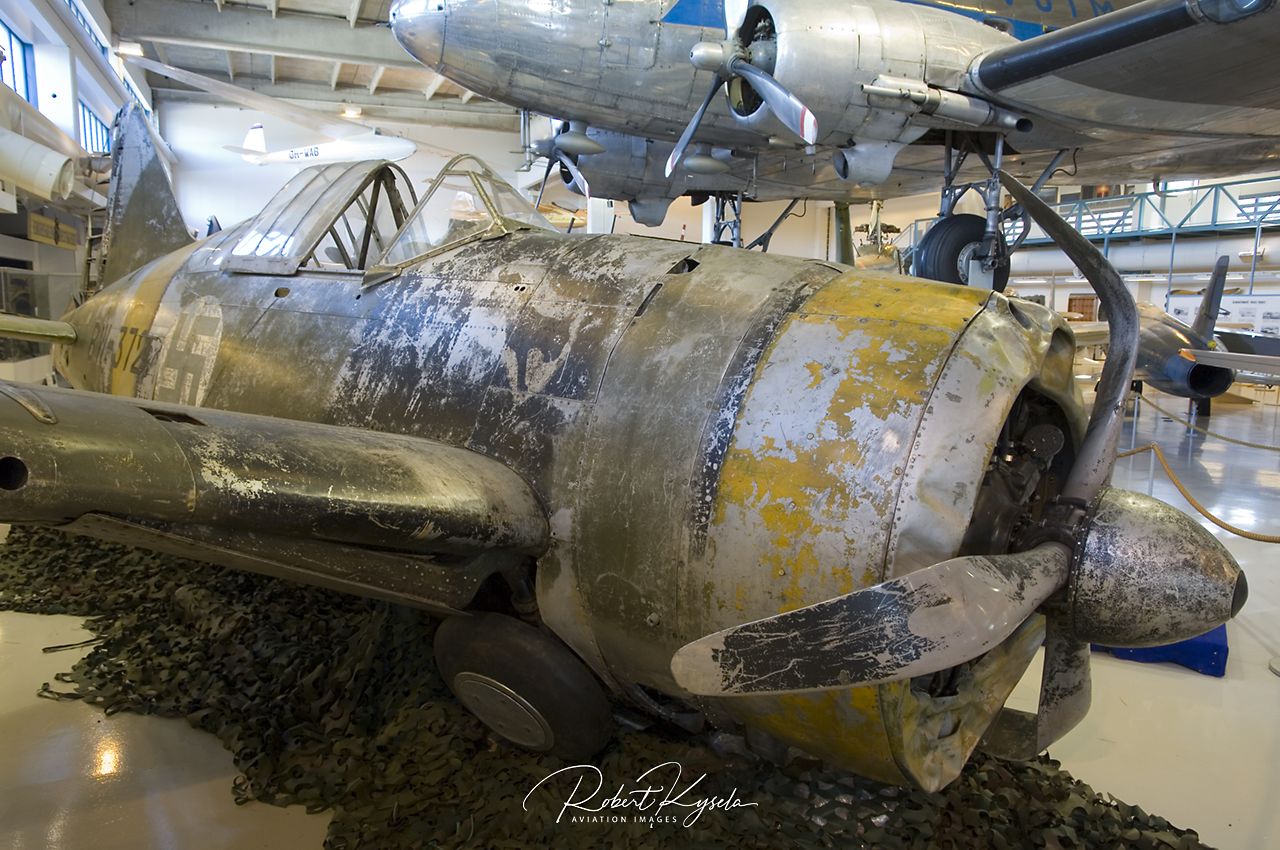
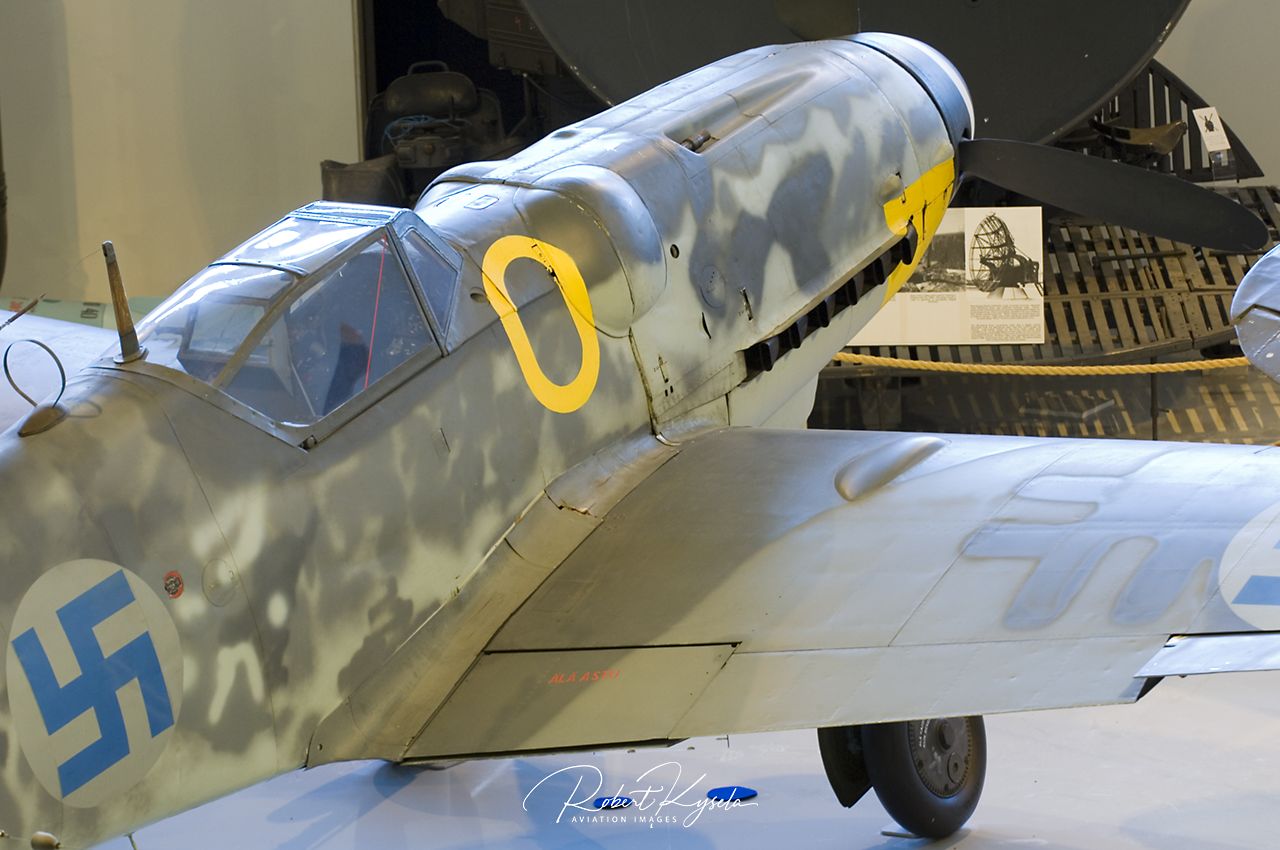
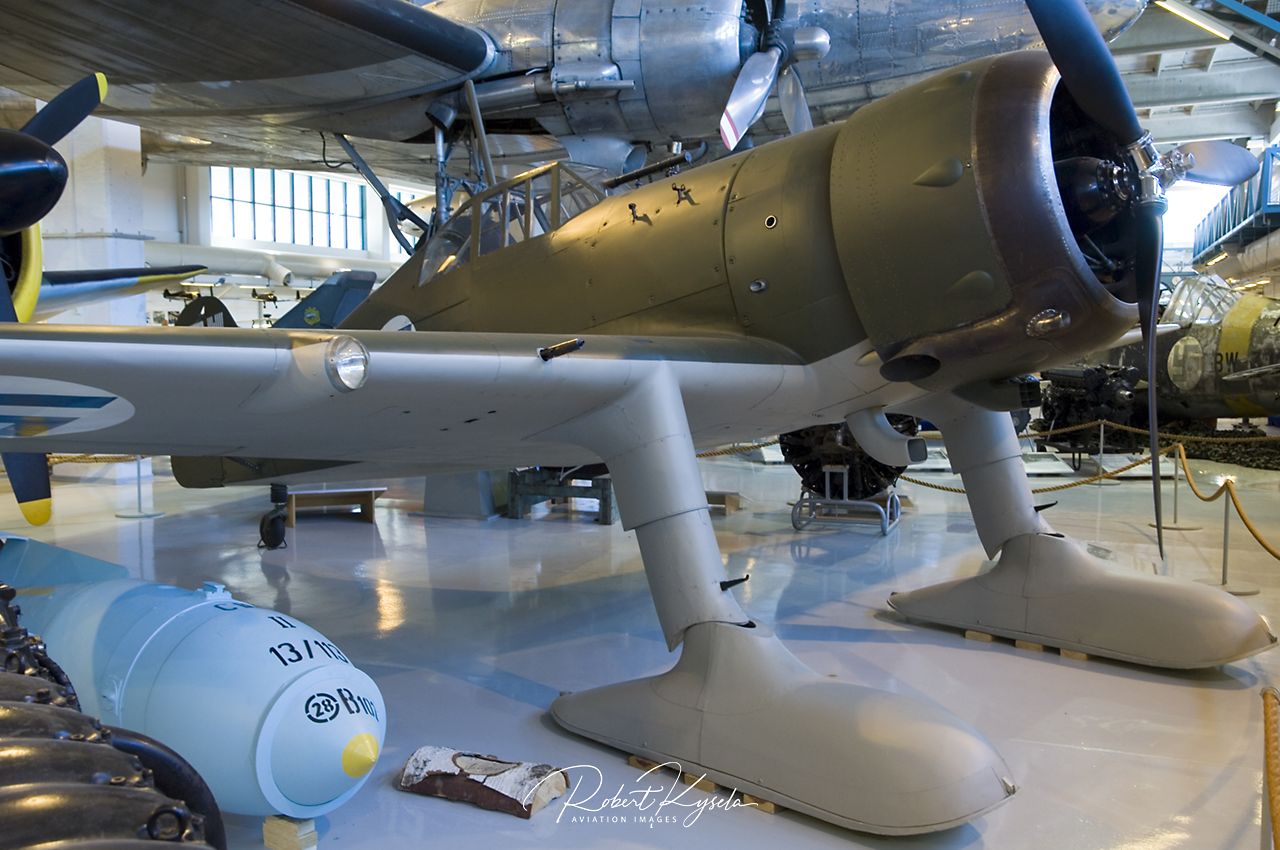
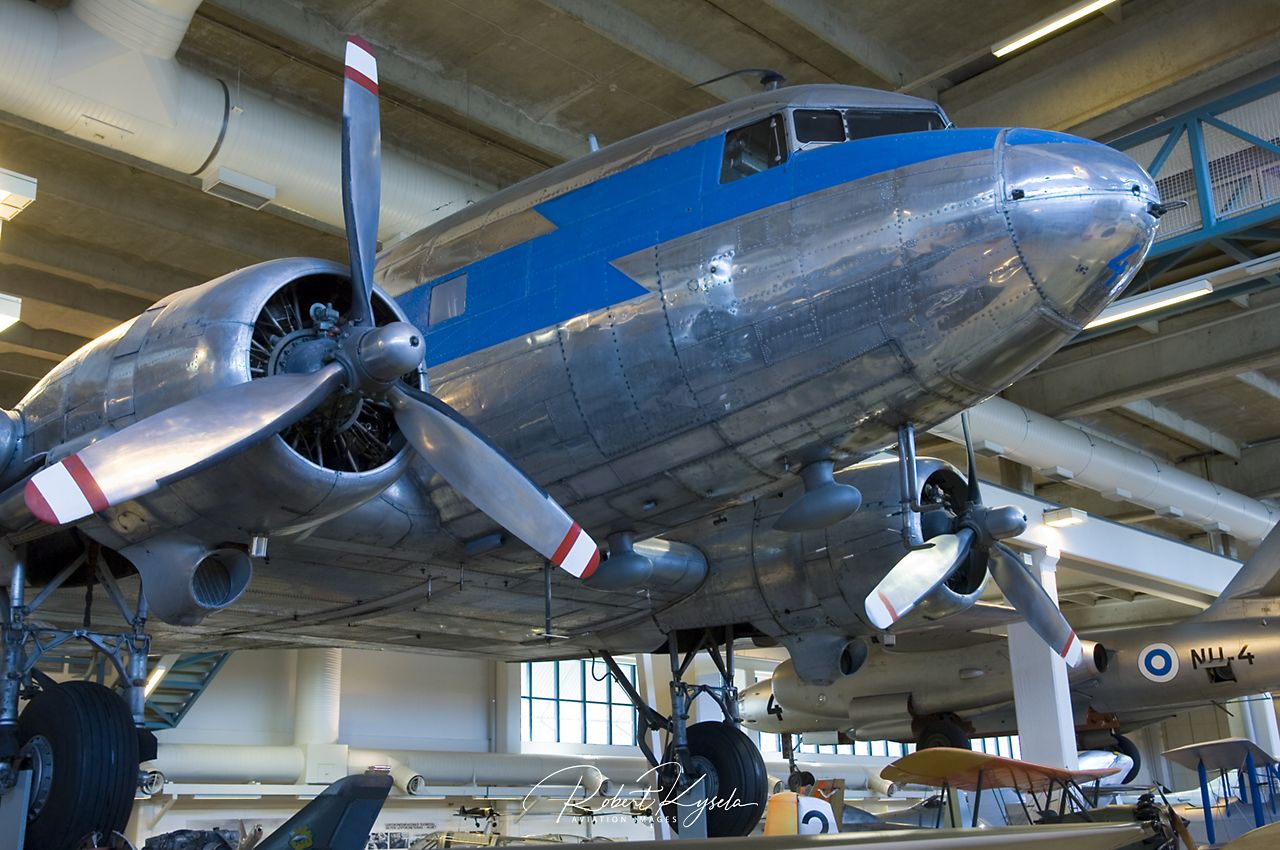
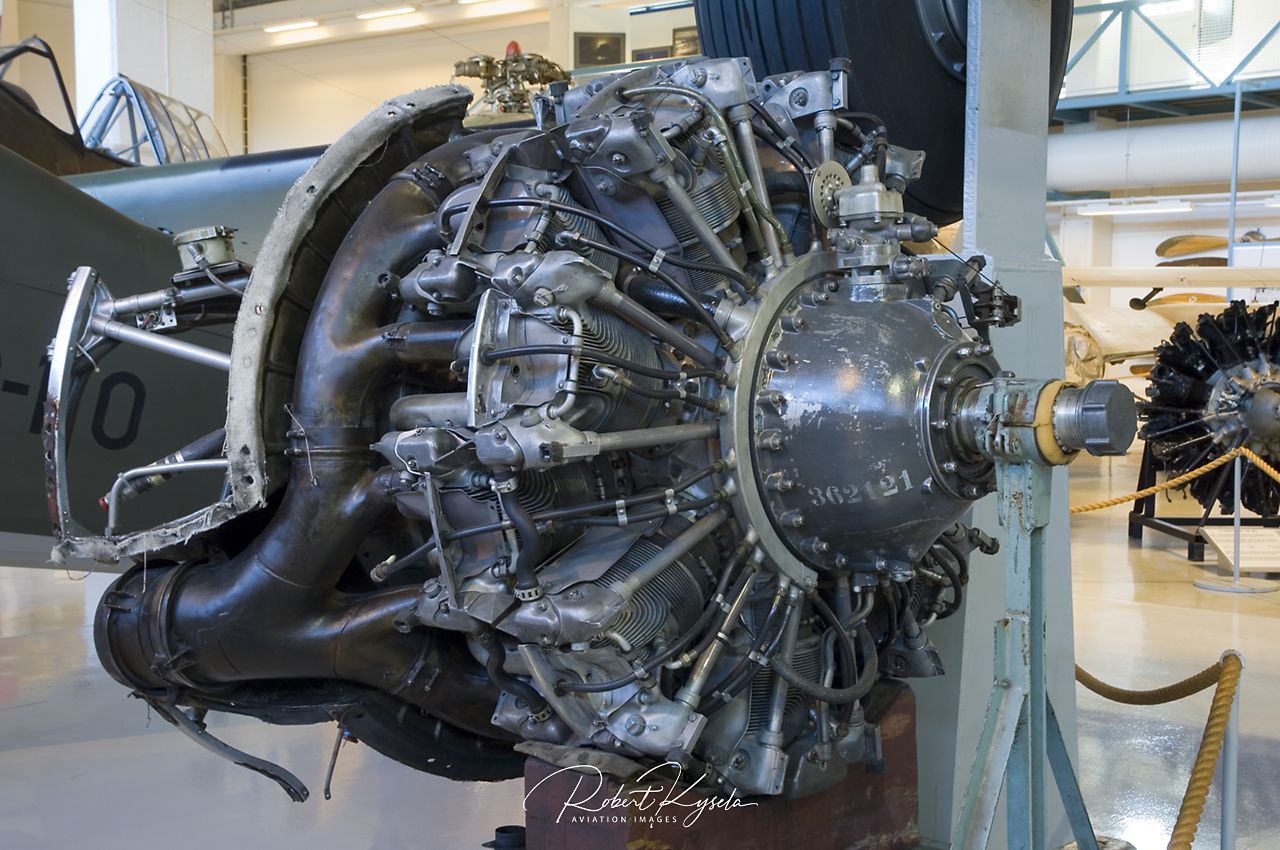
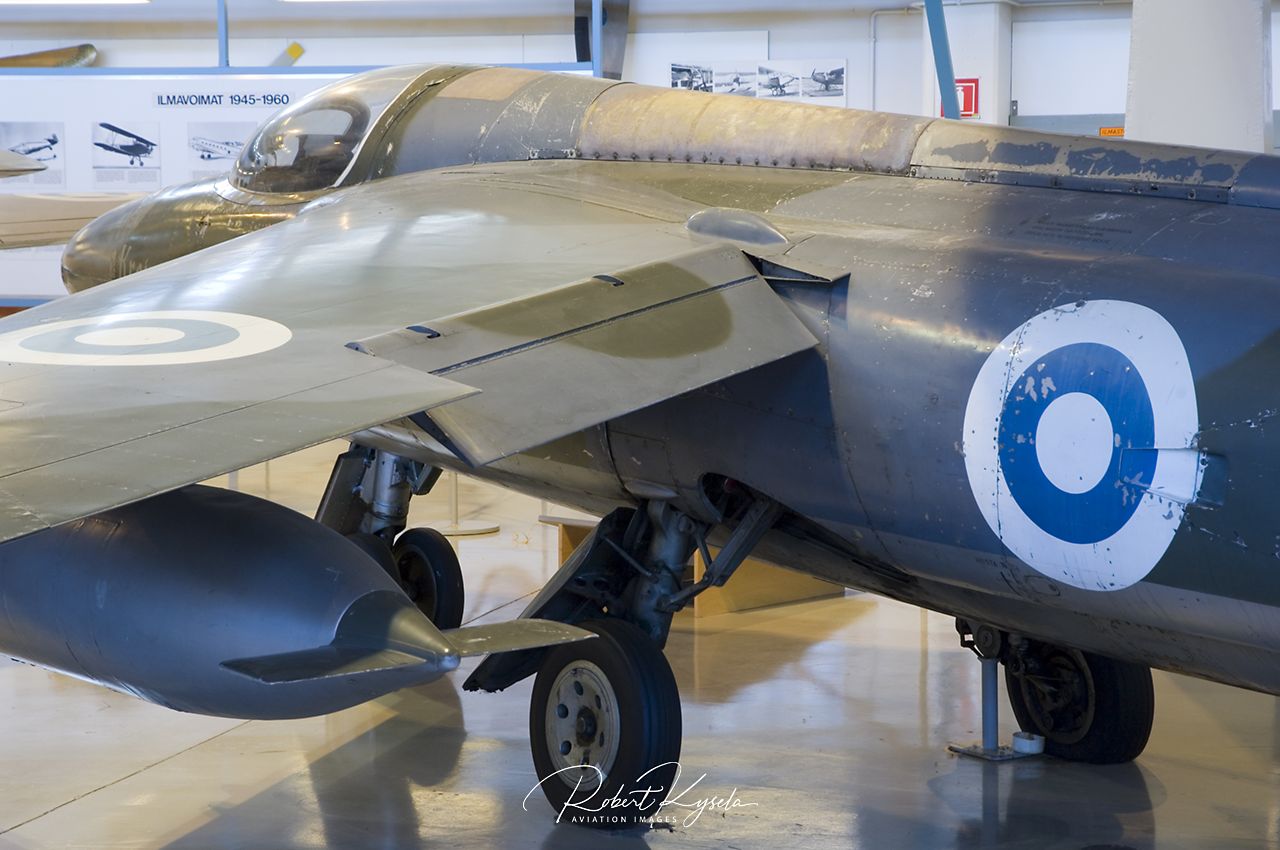
What would one be doing on an ice cold, snowy winter day in Finland? Well, visiting an aviation museum! Some 175 miles north of Helsinki lays the small village of Tikkakoksi in the centre of the Finnish lake district. There one can find one of the most interesting Scandinavian museums – the Keski-Suomen Ilmailumuseo – or in English – the Central-Finnish Aviation Museum. Its collection consists mainly of a huge amount of aircraft, which were operated by the Finnish Air Force in its 90 years of history. The ILMAVOIMAT (Air Force) has owned in their long and varied history several types of aircraft from Eastern as well as Western origin, but also from indigenous production. Due to this fact a visit of this museum, which was founded in 1978 is more than recommended.
The Thulin D carried the personal emblem of the Swedish Count – a blue swastika.
R. Kysela
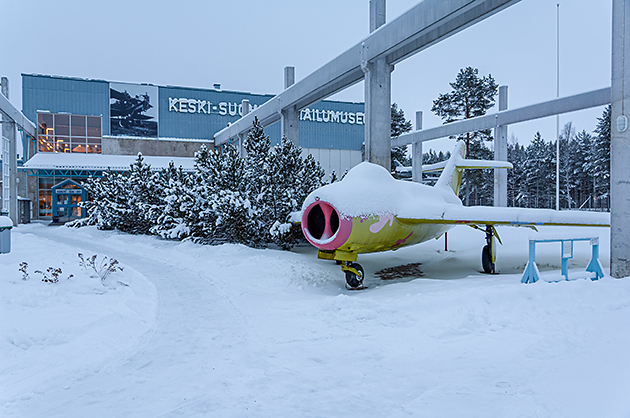
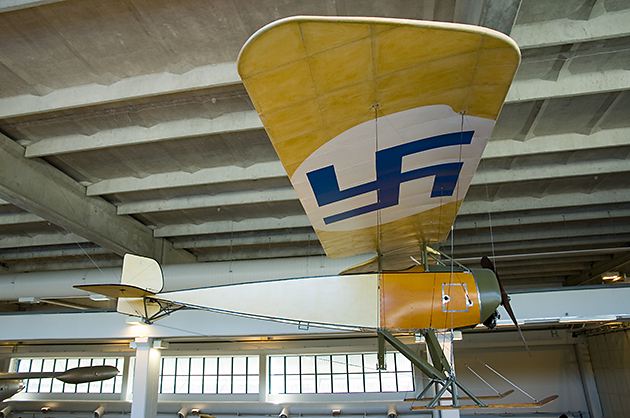
The history of the SUOMEN ILMAVOIMAT is tightly knit with the Swedish Count Eric von Rosen. He gave the newly founded Finnish State (Finland gained their independence from Russia on the 17th of December 1917) its first aircraft as a gift – a Swedish license built Thulin D (Morane Saulnier Type L). This aircraft landed on Finnish soil (in Vaasa) on the 6th of March 1918 with Swedish pilot Lt. Nils Kindberg at the controls. This marked the hour of birth of the SUOMEN ILMAVOIMAT – the Finnish Air Force. The Thulin D carried the personal emblem of the Swedish Count – a blue swastika. The Finns later used this as their National emblem until 1945. Even if Count von Rosen was later linked to the Third Reich due to the fact that the later CiC of the German Luftwaffe, Hermann Goering was married to von Rosen’s sister Karin, the use of the swastika in Finland had nothing to do with National Socialism in Germany. The Thulin D displayed in the museum is actually a replica; nevertheless lots of original parts were used during its construction.
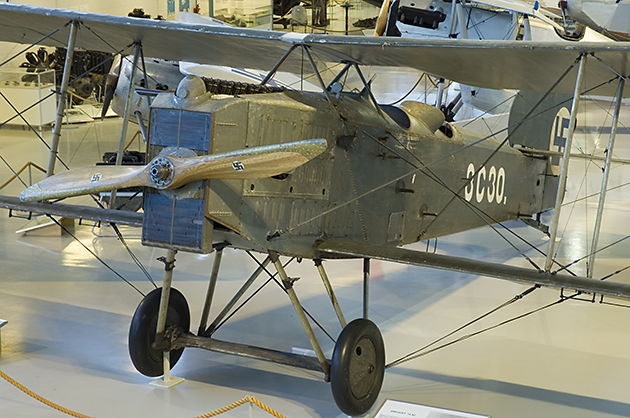
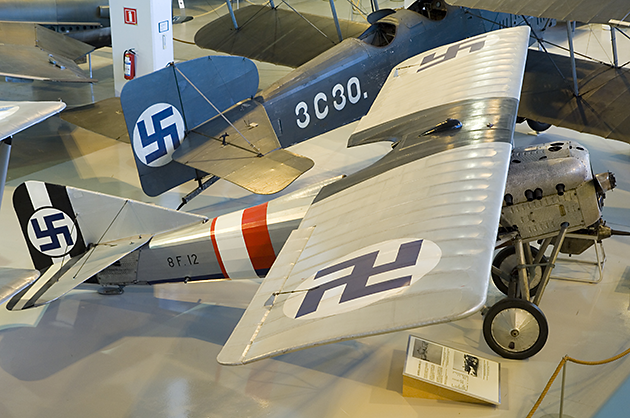
The young Finnish state had to defend its sovereignty by the use of force from the beginning. Immediately after the separation from Russia, there was heavy fighting with leftist factions, supported by the Soviet Union Bolshevik rebels. On both sides air operations were conducted, however this had no influence in the outcome of the Civil War. After the fighting ended, Finland had a hodgepodge of aircraft; many of these were prey aircraft. In the 1920’s and 1930’s the Finnish Air Force continued to build up its arsenal. Aircraft from all over the world, such as French-built Breguet 14, German Hansa Brandenburg W.33, Martinsyde F.4 BUZZARD or Gourdou-Leseurre B. 3 were obtained. The latter two planes are to be seen in the museum as the only surviving copies of their kind.
The existence of an independent aviation industry paid off after the start of the border conflict, which was known as the "Winter War”
R. Kysela
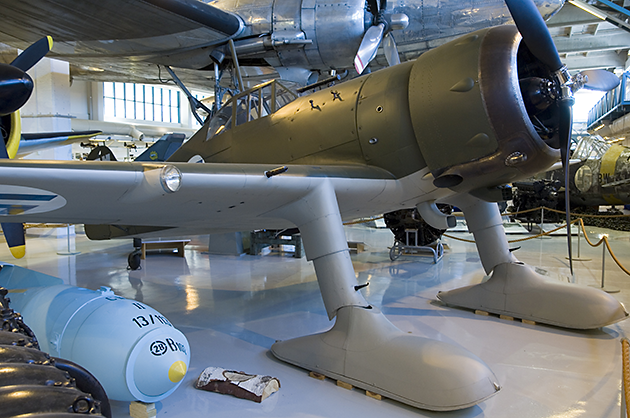
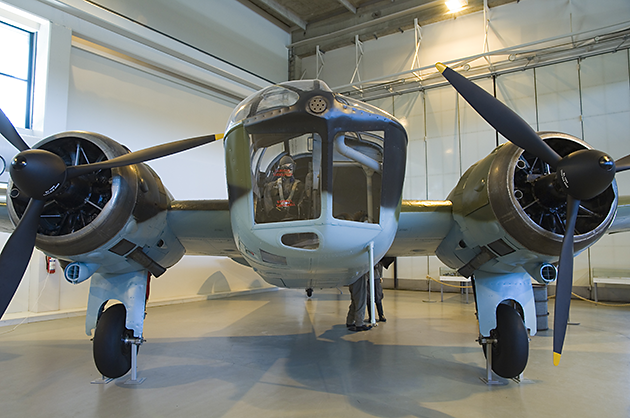
Relatively early the Finns began to build up their own aerospace industry, which beside license produced aircraft also built indigenous designed planes. Amongst others the domestic aerospace industries (Valtion Lentokonetehdas) manufactured British Bristol BLENHEIM Mk IV and Dutch Fokker D. XXI fighter aircraft under license, and before this Hansa Brandenburg W.33 had been license built in Finland (Finnish designation: IVL A.22 HANSA). The existence of an independent aviation industry paid off after the start of the border conflict, which was known as the “Winter War” with the Soviet Union (on November 30, 1939 strong Soviet forces invaded Finland). Hopelessly outnumbered, it was very difficult for the Finnish Air Force to order modern aircraft at short notice, or to get spare parts for existing machines. An order placed for 44 (at this stage already regarded as obsolete) Brewster F2A-1 BUFFALO was still made during the conflict, however their arrival in Finland was too late to let them take part in the fighting. Despite the lack of modern aircraft, the Finnish pilots fought very bravely. They took advantage of the strengths of their old machines, especially the manoeuvrability of the Fokker D. XXI and the Gloster GLADIATOR biplane fighters and skilfully inflicted grievous losses to the Soviets. Well-planned missions and clever tactical use of existing resources, but also the excellent training of Finnish pilots were the background of this success.
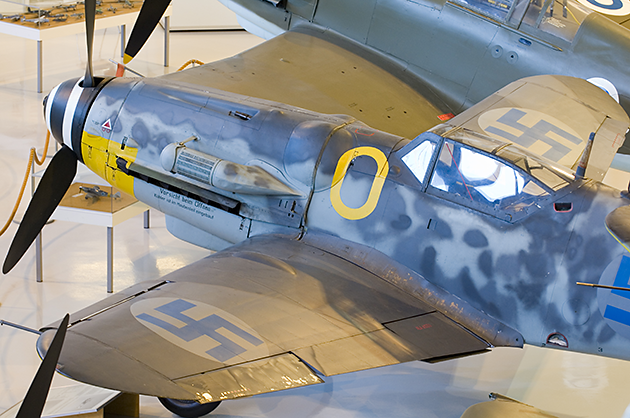
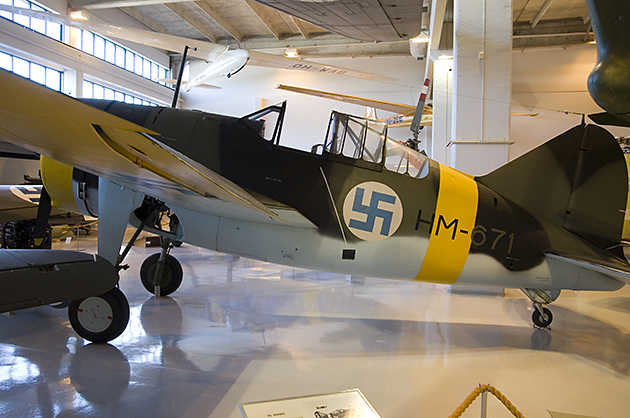
Following the signing of the Ceasefire Agreement (13 March 1940) Finland had to abandon much of its territory, including the city of Vyborg to the Soviet Union – a painful loss, burying itself deep into the national consciousness of the Finns. The alliance with Germany and the Finnish contribution to the German side in the Russian campaign on 22 June 1941 were the logical consequence of this humiliation. This conflict was known in Finland significantly as the continuation war. The Finnish Air Force increased its size and capability especially with German material supplies (e.g. Junkers Ju 88 A, Messerschmitt Me 109 G). Despite these deliveries existing aircraft continued to be used and in many ways had been upgraded. Thus, for example the Finnish Brewster F2A-1 BUFFALO provided with heavier armament (the original 7.62 mm MG were replaced by two 12.7 mm machine guns). Although these aircraft were considered as obsolete by nearly all other operators (U.S. Navy, Royal Navy, Royal Netherland Air Force , Royal Australian Air Force, etc.), this type was popular with Finnish pilots due to its fine handling characteristics. In the hands of an experienced pilot the BUFFALO proved to be a deadly weapon, which is demonstrated by the huge kill ratio (496 kills with only 19 of its own losses, while other sources speak of 473 or 456 kills). This burly little fighter was so popular that even a succession model based on the Brewster F2A was developed. The only prototype of this aircraft, designated as VL HUMU, is now on display in the Finnish Air Force Museum as well as an original Brewster F2A-1 (BW-372) BUFFALO, which was salvaged in 1998 from a lake. The recovery was made on behalf of the NATIONAL MUSEUM OF NAVAL AVIATION in Pensacola, Florida. Due to a request of the Finnish Air Force CiC, the BUFFALO can be seen for a limited period of 3 ½ years in the Finnish Air Force Museum as a loan (this loan has been extended in the meantime).
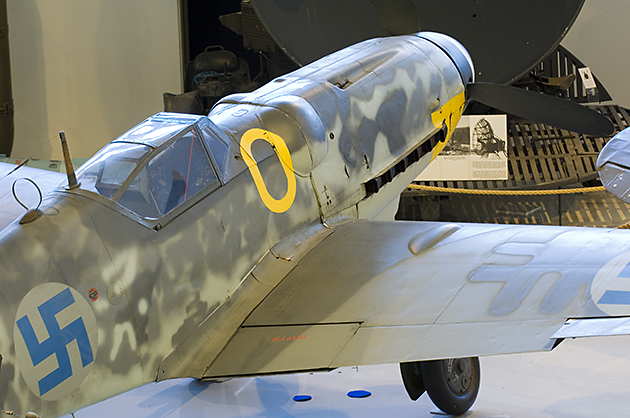
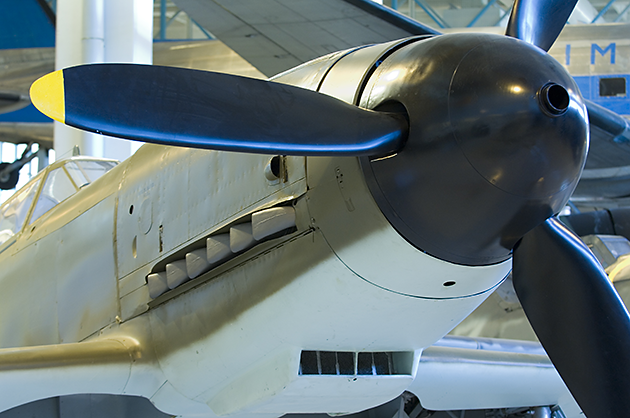
As already mentioned, one of the most important aircraft of the Finns in the 1940s, was the Messerschmitt Me 109 G. A total of 159 of these aircraft were delivered to Finland from 1943 and they were used with great success. However, the Finnish pilots were not very enthusiastic about the Me, at least not in case of the take-off and landing characteristics – the famous Achilles heel of the One-O-Nine The last Me 109 G was placed out of service in March 1954 and is preserved in its original condition (did you know that the Finnish company Nokia produced aircraft tires earlier? Just have a look on the 109 wheels!). The Me 109 was powered by a 1475 hp Daimler Benz DB 605 twelve-cylinder inline engine. The same engine should also serve the Finnish development VL PYOeRREMYRSKY. This aircraft was developed from 1942 to 1945 and should complement the Me 109. The VL PYOeRREMYRSKY was built mainly of plywood and showed good handling characteristics from the beginning. The wide chassis allowed her much better take-off and landing characteristics compared to the Messerschmitt. Minor problems with the processing of wood construction, especially in case of the glue, however, delayed the development. When the aircraft had its maiden flight on the 21 November 1945, the continuation war had already been over for a year. This and the fact that the Daimler Benz engines were no longer available ended the promising project. The only prototype is now displayed in addition to the aforementioned Me 109 in the museum.
Finland was not allowed to be part of any power bloc, and was from then on a neutral country.
R. Kysela
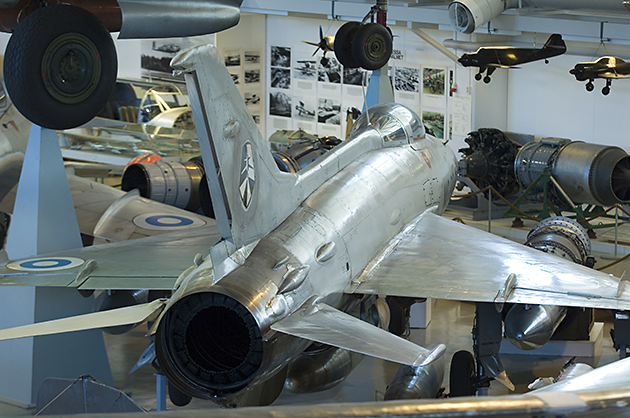
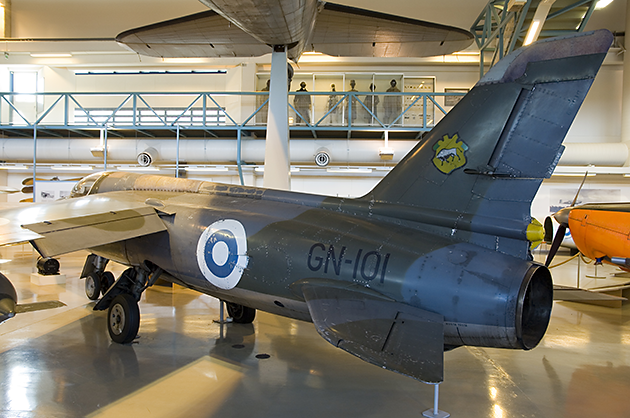
The peace treaty in Paris (1947) was a significant influence on the further development of the Finnish Air Force. According to the agreement the Finns were prohibited to have more than 60 combat aircraft, absolutely no bombers (with internal bomb load), and their active personnel count was not to exceed 3000 people employed. Guided weapons and all offensive weapons were also banned, such as procurement of weapons and equipment from Germany. Finland was not allowed to be part of any power bloc, and was from then on a neutral country. This allowed the Finns, however, to get their weapons and equipment from East and West, and ultimately this is what the Finns did. So it came about that the SUOMEN ILMAVOIMAT purchased Russian-built Mikoyan Gurevich MiG-21 F alongside with Swedish Saab J-35 DRAKEN and British Folland GNAT F.1. The Fouga CM-170 was used as a standard trainer, just as were the De Havilland Vampire T.Mk55 used as a trainer and light ground attack aircraft. To get around the ban of having bombers (in part), Ilyushin IL-28 (NATO code: BEAGLE) were procured, which, however, were officially used as target towing aircraft.
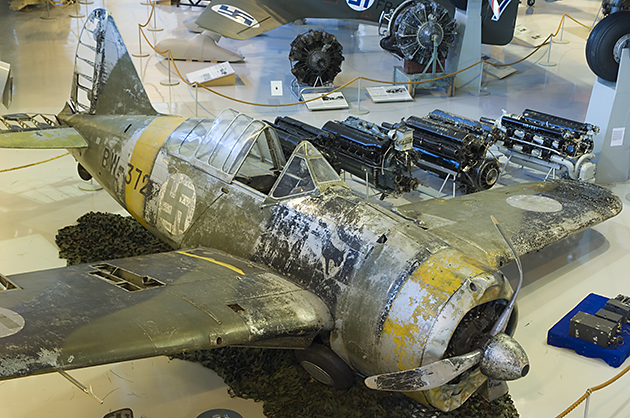
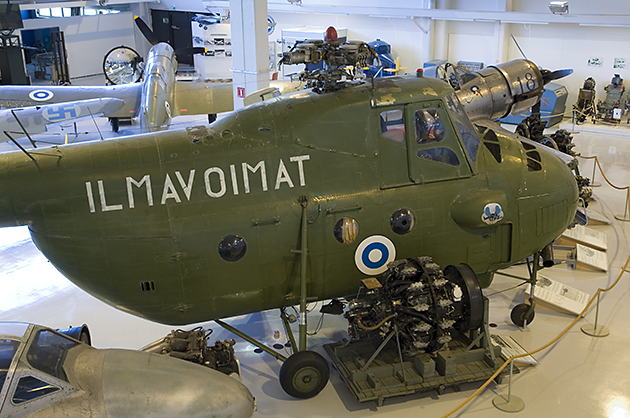
VERDICT: All of these aircraft (and more) can be seen in the Central Finnish Aviation Museum in Tikkakoksi. Especially nice to see is the perfectly restored Bristol BLENHEIM Mk IV and the Brewster BUFFALO F2A-1, which is displayed in the state as it was recovered from the Karelian lake (of course cleaned and preserved). A large number of very nicely built airplane models in display cases, showcases many of the aircraft in Finnish services that cannot be seen as an original aircraft. A visit to the Keski-Suomen Ilmailumuseo Tikkakoksi is therefore recommended in all cases – and this not only in wintertime!
Robert Kysela / CHK6

